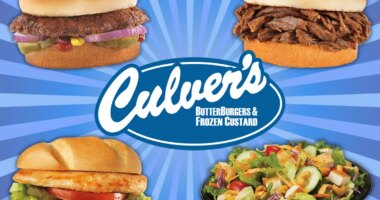Your body needs a little bit of salt every day for the sodium it contains. But too much sodium can boost blood pressure and stress the heart and blood vessels. The low-sodium Dietary Approaches to Stop Hypertension (DASH) diet is high in fruits, vegetables, and whole grains; moderately high in nuts and low-fat dairy products; and low in red and processed meats. Following it can lower blood pressure and reduce the risk of heart disease and stroke.

Nine out of 10 Americans still consume more sodium than the currently recommended limits, according to a 2016 report from the Centers for Disease Control and Prevention. Excess sodium consumption was found to be a particular problem among men, 98 percent of whom consumed too much sodium compared with 80 percent of women. Among people at higher risk for heart disease and stroke (including people over age 50 and those with high blood pressure, diabetes, or kidney disease), three out of four consumed more than the recommended limit of 2,300 milligrams (equivalent to one teaspoon) of sodium per day. Most of the sodium Americans consume comes from packaged, processed foods, and restaurant meals.
On average, an American adult consumes approximately 3,500 milligrams (mg) of sodium per day, which is equivalent to about 1½ teaspoons of salt. The 2015–2020 Dietary Guidelines for Americans advises that we consume less than 2,300 mg sodium per day. Individuals with prehypertension or hypertension, the Dietary Guidelines state, would reap even more benefits by reducing their sodium intake to 1,500 mg per day. It can be challenging to reduce sodium to recommended limits, but every step you take toward decreasing your intake can help in lowering blood pressure.
To trim sodium from your diet, you’ll need to do more than hide the salt shaker—only about 11 percent of our sodium intake comes from salt added during cooking or at the table. Packaged foods and restaurant foods account for the bulk of the sodium in our diets—almost 80 percent. While reading nutrition labels can help you scale back on sodium in packaged foods, it’s more difficult to determine amount of salt in restaurant meals. Chain restaurants’ websites typically list sodium amounts in their offerings; it’s worth browsing the Internet for that information.
Restrain Your “Salt Tooth”
Exposure to salt—even at an early age—may influence your preference for salty foods. Infants exposed to foods containing salt prior to six months of age had a greater preference for a salt solution, compared to infants who did not have early exposure to salty foods, according to a 2012 study of 61 infants (American Journal of Clinical Nutrition.) This preference for salty taste persisted into preschool, where children in the early salt exposure group as infants were more likely to lick salt from the surface of foods.
Experimental studies from the 1980s show that young children required 6 to 15 taste exposures before accepting a new food or flavor. And recent research shows that adults, too, require repeat exposures to new tastes—in this case, low-sodium versions of familiar foods—before they accept them.
Researchers examined the acceptance of low-salt soup among 37 adults (Food Quality and Preference, May 2012.) Participants were given either no-added-salt soup or the same soup with 280 milligrams of sodium per serving. After almost daily exposure for eight days, the no-added-salt group showed increased liking for the soup by the third exposure. In a June 2014 study published in the same journal, researchers studied the acceptance of low-sodium tomato juice among 83 subjects over 16 weeks. Results showed a shift in preference for lower salt in tomato juice after repeat exposure, concluding that salt preference can be altered by exposure alone, even in study subjects who consumed a high-sodium diet.
Since preference for less salty foods may literally be an acquired taste, strategies for lowering salt in your diet should include repeat exposures to low-salt food items. While you’re at it, try these 15 tips for slashing sodium:
- Use fresh ingredients when you can. Less processing and packaging usually means less sodium.
- Choose unprocessed or minimally processed foods. Canned, processed, and frozen foods are often loaded with added salt.
- Rinse canned foods, like tuna, beans, corn, and peas. It removes the lion’s share of sodium.
- Read labels and choose lower-sodium products. When you do buy processed foods, choose items where the sodium content is less than or equal to the calories per serving.
- Know where hidden sodium lurks. Some of the highest-sodium foods that are common in the American diet include pepperoni pizza, white bread, processed cheese, hot dogs, spaghetti with sauce, ham, soy sauce, barbecue sauce, ketchup, cooked rice, and flour tortillas. Make these items a small part of your diet. Be wary even of reduced-sodium products.
- Don’t add salt to pasta or potatoes during cooking. Save the small amount of salt for the table, where it has the biggest taste impact.
- Use coarse grain salt, like kosher salt. Less surface area on salt granules translates into less sodium than regular table salt.
- Don’t expect sea salt to provide less sodium. The same goes for finely ground gourmet salts, whether from France or the Himalayas.
- Substitute acidic flavors, like fresh lemon or lime juice or lemon zest, for salt. It’s not a complete taste substitute, but it helps.
- Try salt substitutes. They typically contain potassium, instead of sodium, but they can leave a bitter aftertaste. Whether you taste the bitter is genetic. You won’t know if you’re a “bitter taster” until you try.
- When eating out, keep an eye on salt content. Some chain and fast-food restaurant items can top 5,000 to 6,000 milligrams of sodium per serving — about four times the healthy daily limit. Downsize your portions by skipping the super-size or sharing a dish, or try to find the lower-sodium choices (many franchises have nutritional information on their websites). When eating out, ask that your dish be prepared with less salt.
- Use your sodium “budget” wisely. Rather than spending your sodium allowance on salty snacks and heavily processed foods, use small amounts of salt to enhance the flavor of produce, whole grains, nuts and legumes, and other healthy ingredients.
- Train your taste buds. One study found that people enjoy lower-sodium foods almost as much as food with the common sodium overload. It is possible to shift your sense of taste to enjoy foods made with less sodium.
- Know that adjusting to the taste of a lower-sodium diet takes time. Cut back gradually to allow your taste buds to get used to it.
- Read labels, ask questions, and choose carefully. Remember that most of the sodium in your diet comes from processed, packaged, and restaurant foods.
Make these changes gradually but consistently to reduce your sodium, and over time you’ll find that you don’t miss the salt.
Follow us across our social channels to get the latest, on Facebook , Twitter .










